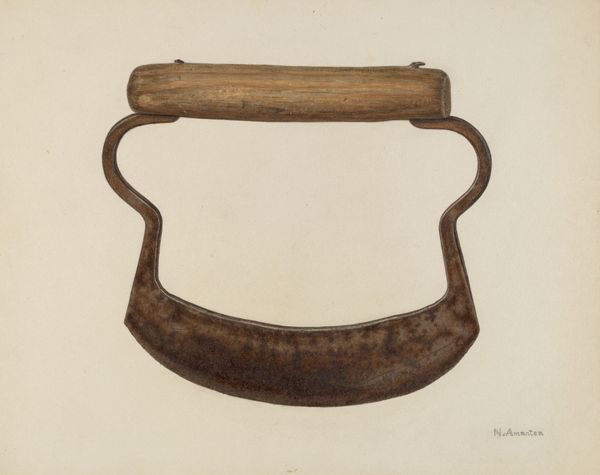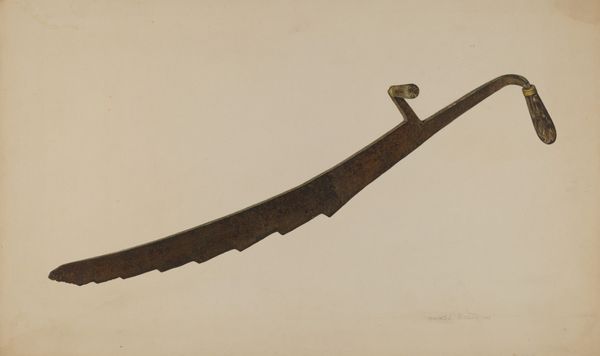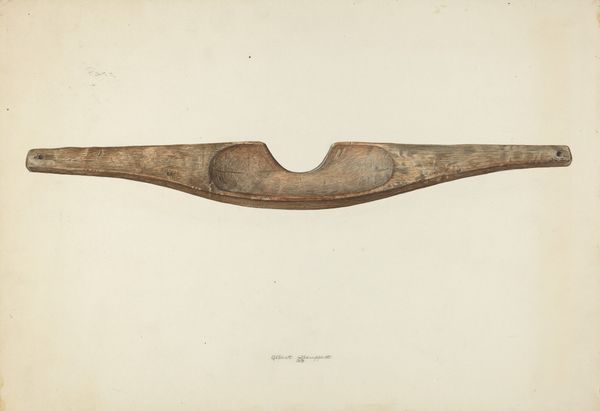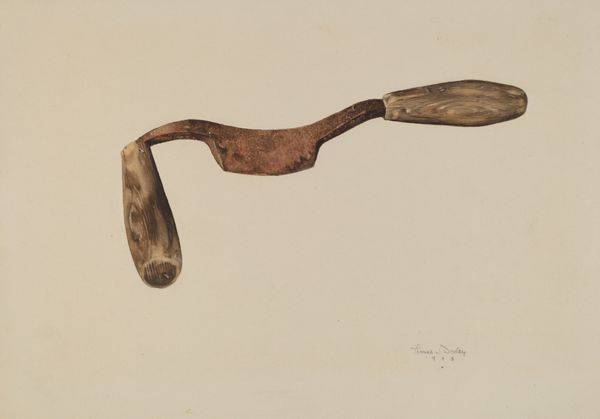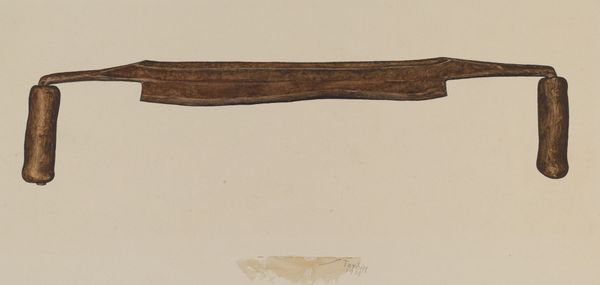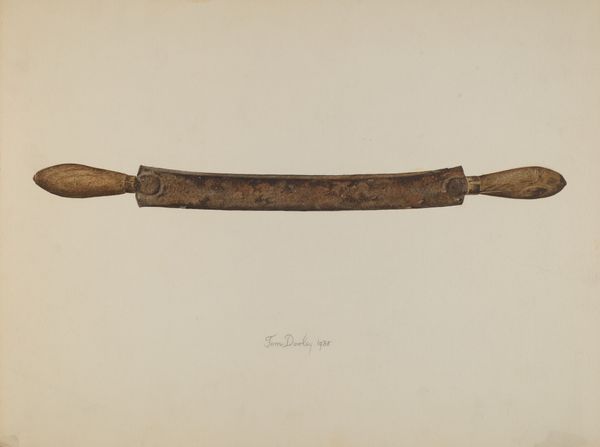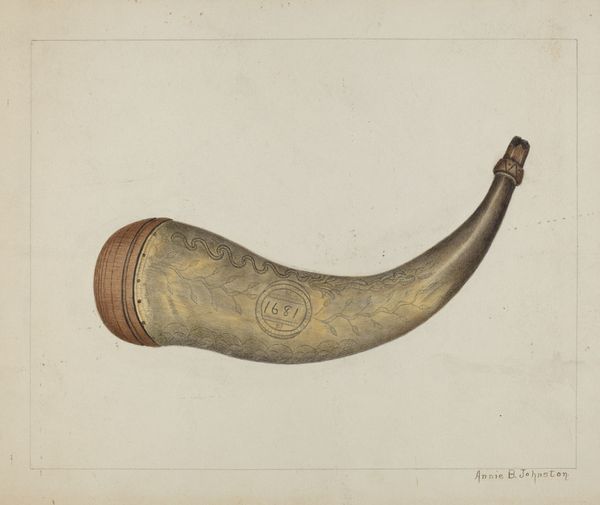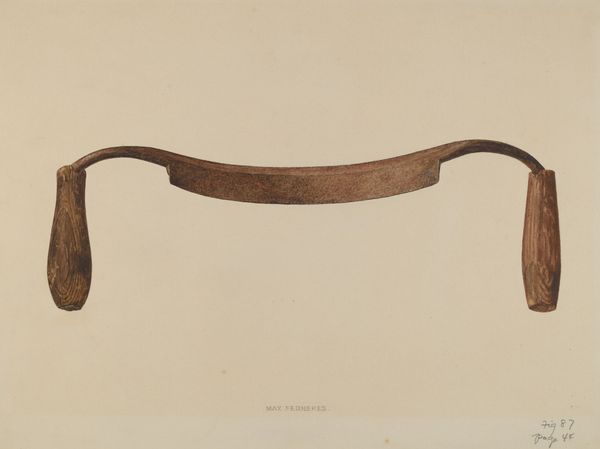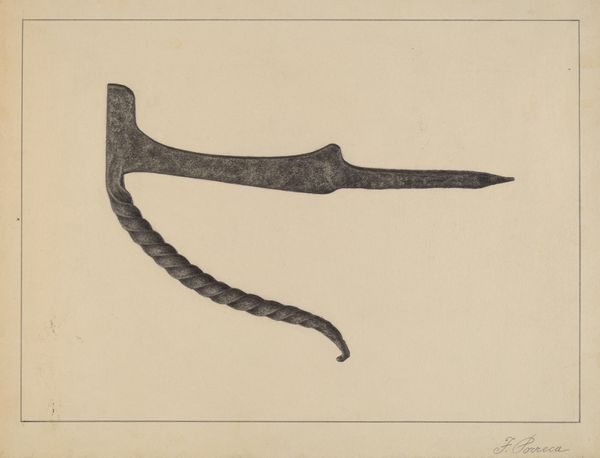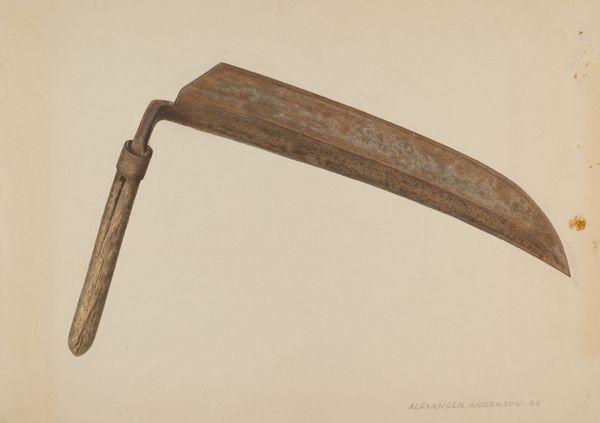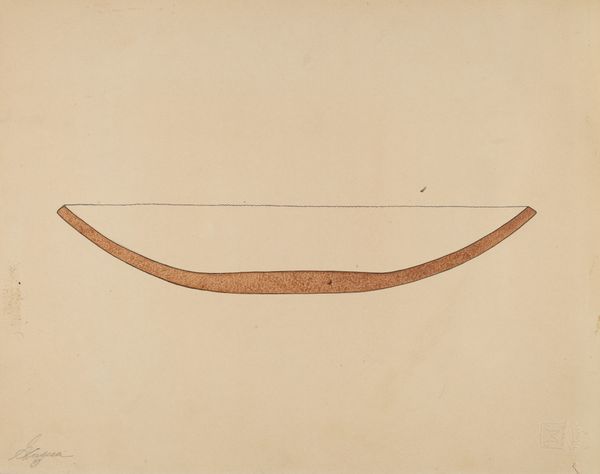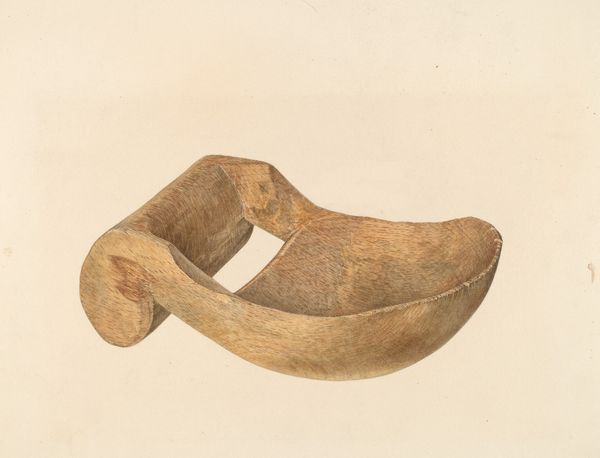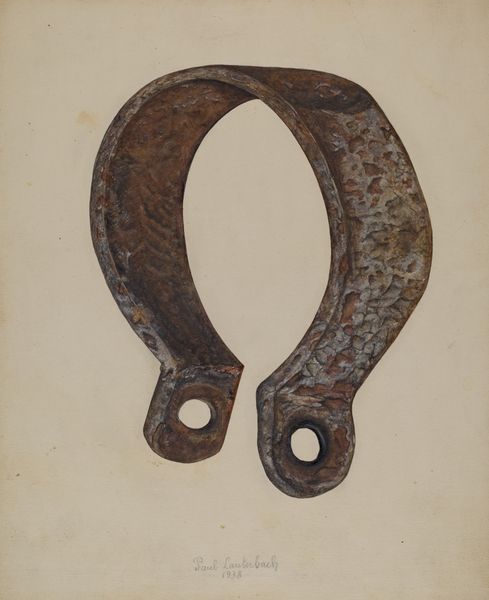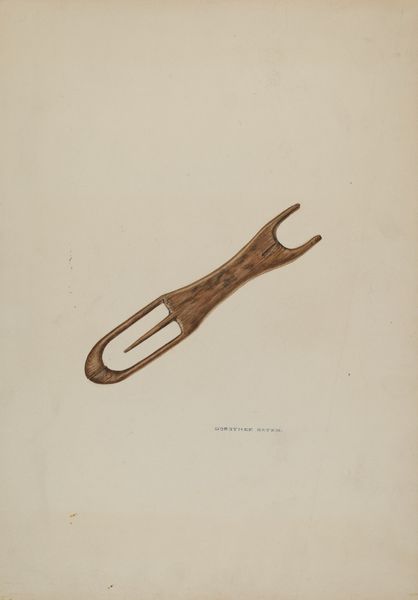
drawing, sculpture, ivory
#
drawing
#
narrative-art
#
sculpture
#
geometric
#
ancient-mediterranean
#
sculpture
#
ivory
#
miniature
Dimensions: overall: 45.9 x 59 cm (18 1/16 x 23 1/4 in.) Original IAD Object: 5" long
Copyright: National Gallery of Art: CC0 1.0
Oscar Bluhme depicted this walrus tusk using pencil and watercolor on paper sometime in the 20th century. Scrimshaw, the practice of carving or engraving on bone or ivory, often tells a story. The material itself—walrus tusk—immediately speaks of a specific environment and the people connected to it, particularly the indigenous communities of the Arctic who have long relied on walruses for sustenance and materials. The original scrimshaw would have been made with simple tools, demanding incredible patience and skill to transform a raw piece of tusk into a detailed narrative. In the 19th century, sailors often took up this craft during long voyages, using it to pass the time and create keepsakes. By imbuing the material with imagery relating to their experiences, they transformed the tusk into a canvas. Bluhme’s depiction connects us to histories of labor, trade, and cultural exchange, showing how the act of making can imbue an object with layers of meaning far beyond its utilitarian purpose.
Comments
No comments
Be the first to comment and join the conversation on the ultimate creative platform.
